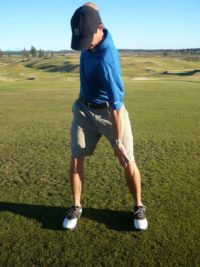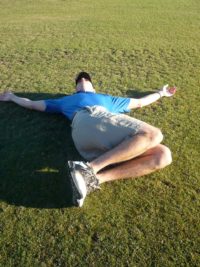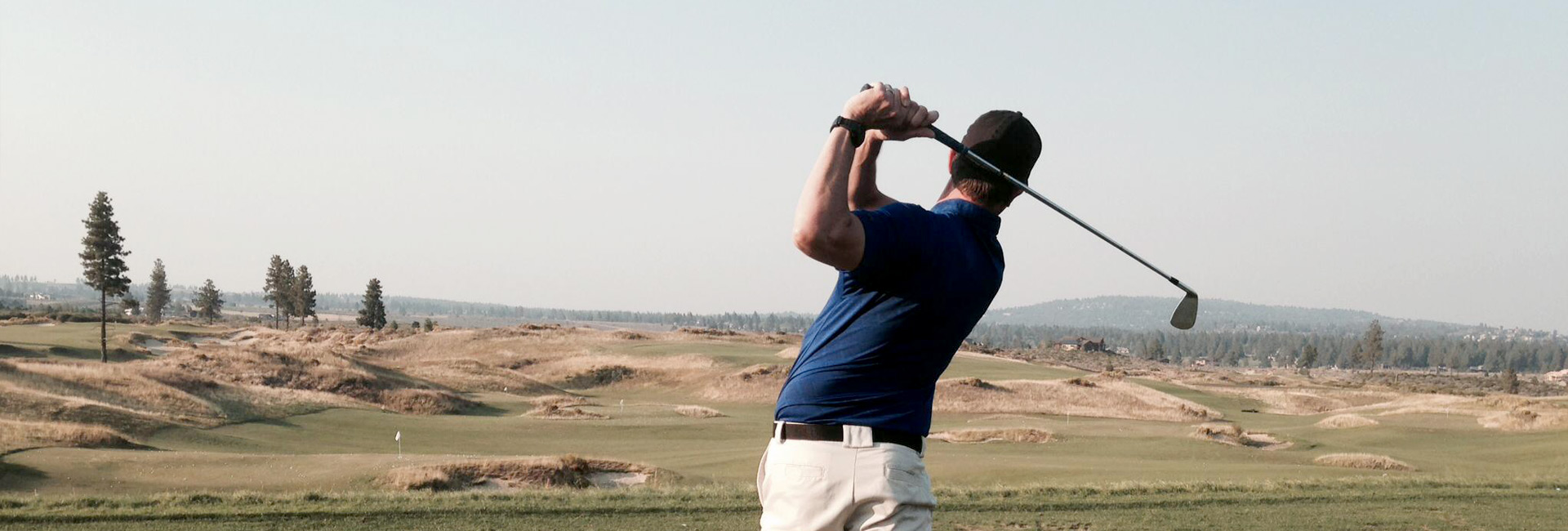An efficient backswing requires your physical body to do certain things. You can make a backswing without these various physical components in place but the result will likely be less than optimal. Backswing faults (biomechanical inefficiencies) include loss of posture/spine angle, sway, reverse pivot, and reverse weight shift. Addressing a few of these key areas of concern can go a long ways in making your golf game more enjoyable.
In the backswing pivot you will need a combination of muscle length and muscle strength or what we term mobility and stability in certain areas. I have decided to focus on two areas that need mobility for a good backswing pivot—the hips and the mid-back.
Your right leg will need to stay stable as your pelvis rotates around the hip joint (If you are a right handed golfer). That right hip has to rotate inwardly in relation to the pelvis and the left hip has to rotate outwardly. I have found that a fair number of golfers lack adequate range of motion in the hips to avoid the above swing faults in their quest for a “long” backswing. I have included two stretches (mobility exercises) to help assist you in gaining the proper hip motion. The first one can be done standing for the left hip and the second lying on your back for the right hip.
With both hip motions restored you are more likely to achieve the 45 degrees of “hip turn” that creates the optimal zone 1 pivot.
Your mid-back rotates along with your hips during the backswing pivot. You will need mobility into right rotation through your mid-back. If your posture is rounded, this will be more difficult.
Overall posture through your spine is crucial in gaining the 90 degrees of ideal shoulder turn. Try slumping over right now while you are reading this (if you are not already), place your arms across your chest, and turn your upper body to the right to see what it feels like. Then straighten up by lifting your breast bone toward the ceiling and slightly pulling your shoulder blades together and down.
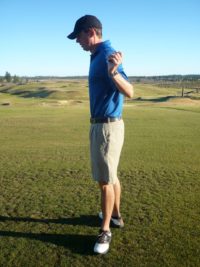
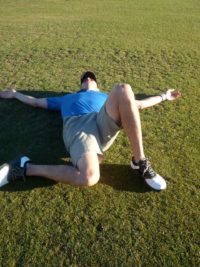
Now try to rotate to the right and feel the difference in the amount of motion and restriction you feel compared to the slumped version. You should feel greater ease and greater motion. Now the challenge is managing that in standing while you are addressing the ball!
Here are a couple of ways to improve right mid-back rotation mobility. Avoid pushing these if you experience any pain.
The body is such that on either side of these “mobility areas” you need stability/strength. In other words, the knees, the lower back/pelvis, and the shoulder blades need to be strong and hold relatively stable as you move into the backswing. To improve your pivot try these exercises or consider a TPI assessment to determine your specific limitations.
